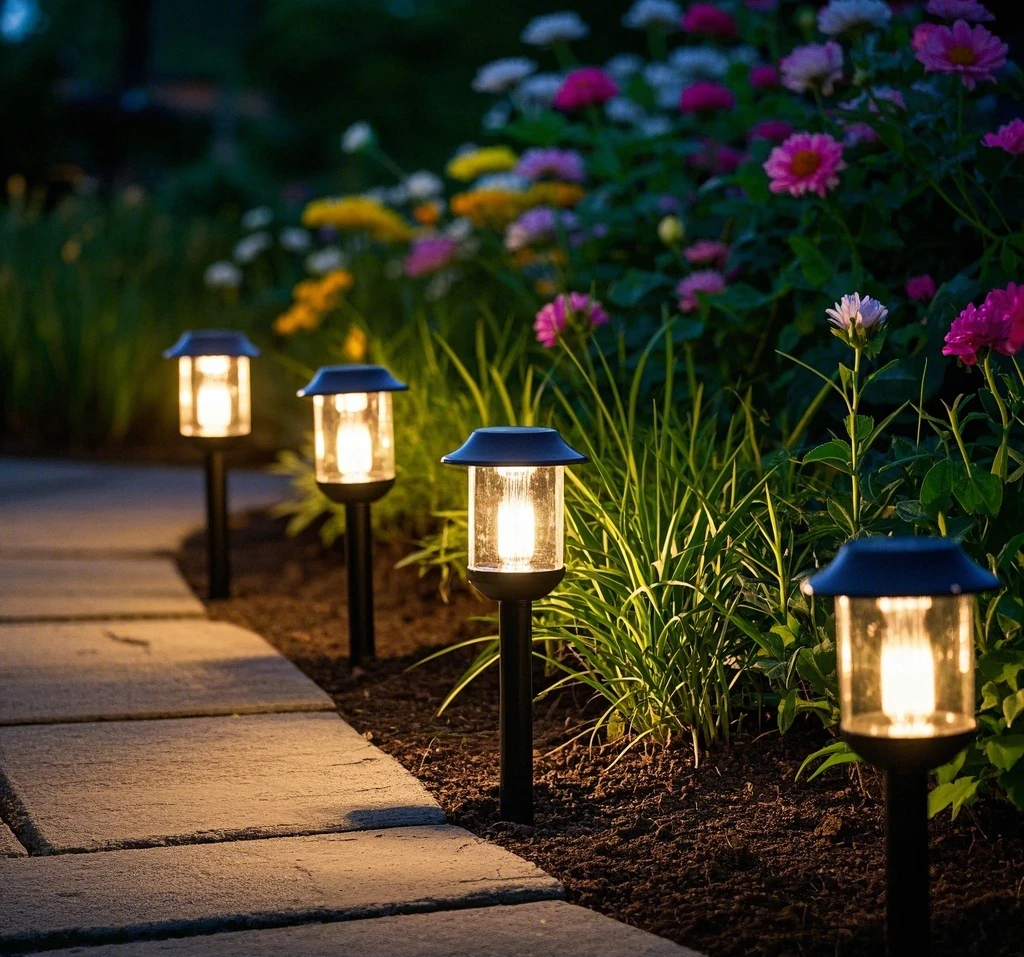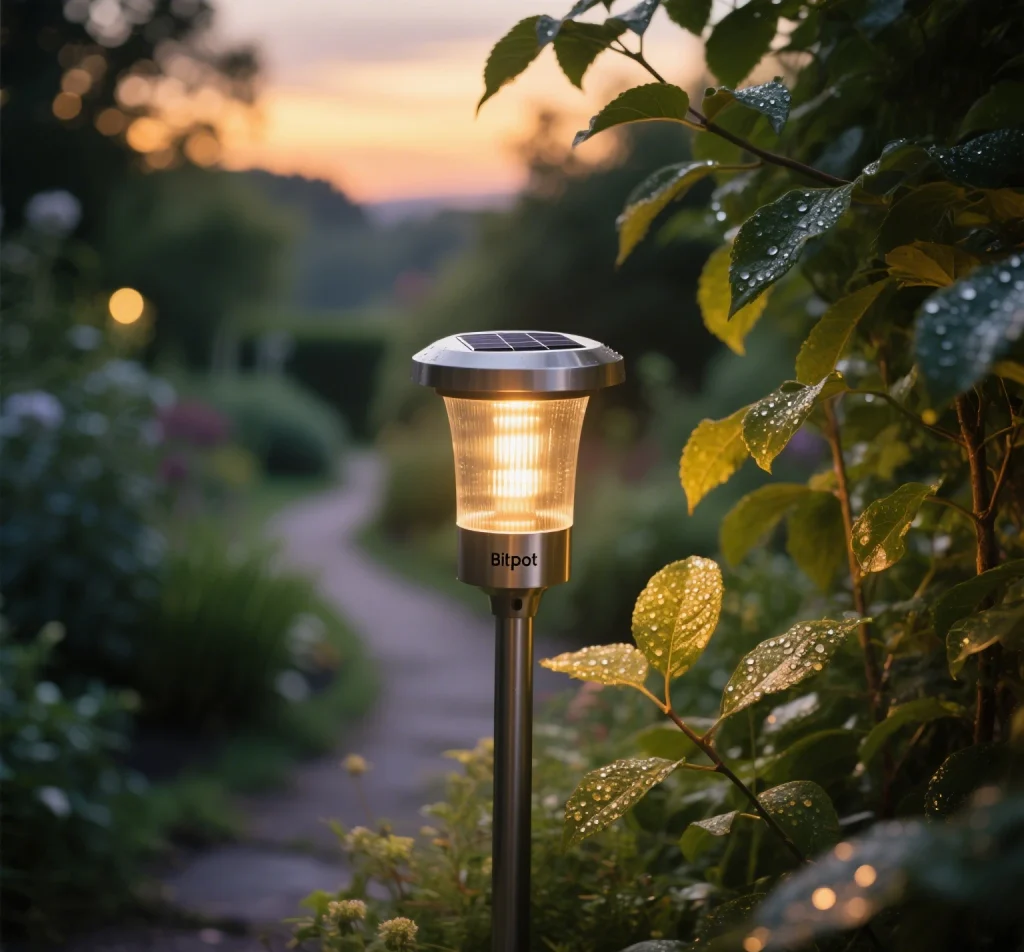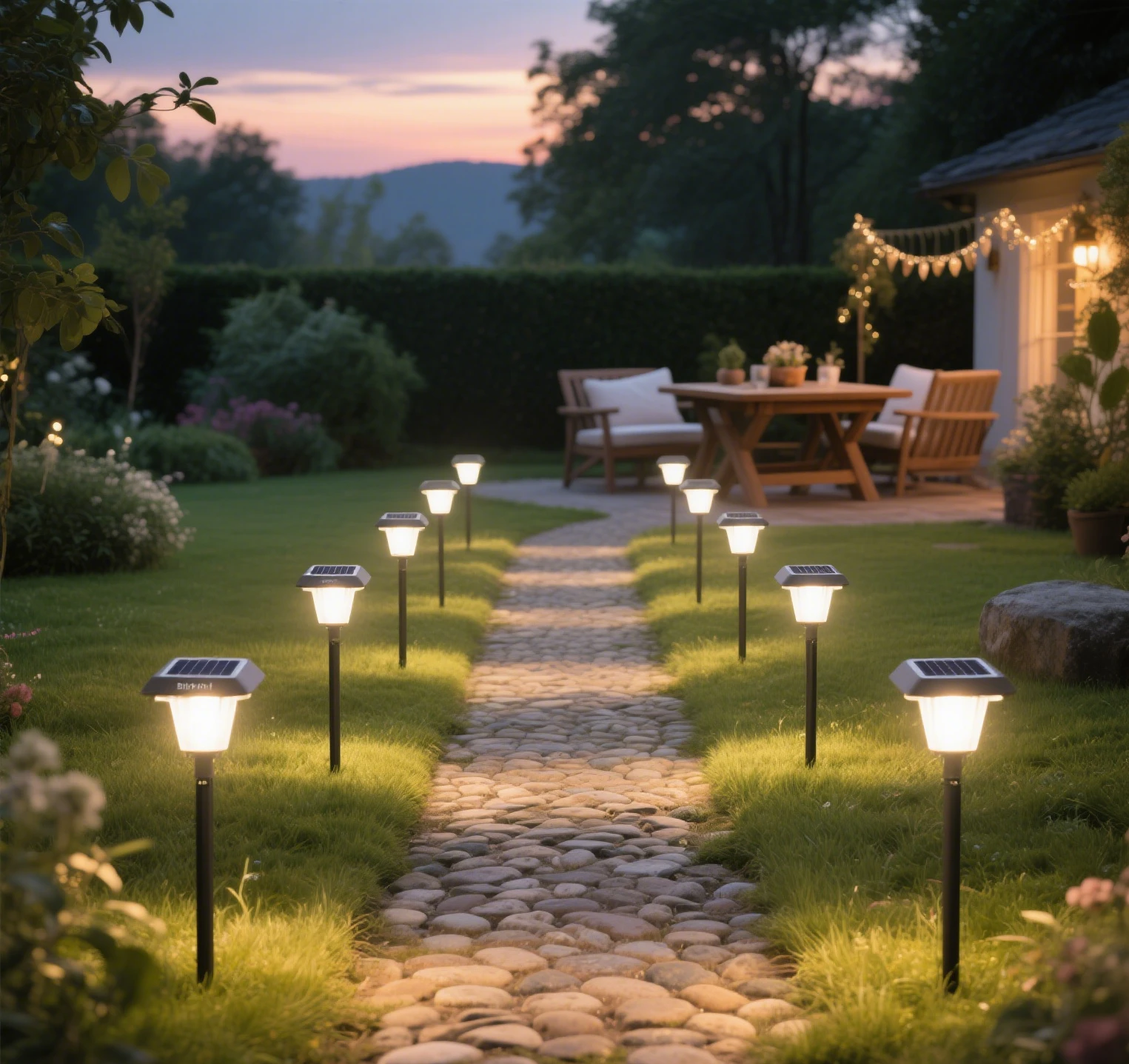Outdoor solar lights have become a popular choice for eco-conscious homeowners and businesses, offering an energy-efficient and sustainable way to illuminate gardens, pathways, and patios. A common question, however, is: how do outdoor solar lights work without direct sunlight? While these lights rely on solar energy, advancements in technology allow them to function effectively even in less-than-ideal conditions, such as cloudy days, shaded areas, or winter months. This article explores the mechanics behind solar lights, their ability to operate without direct sunlight, and practical tips to optimize their performance for stunning outdoor illumination.

The Basics of Outdoor Solar Light Technology
Outdoor solar lights operate using a simple yet ingenious system that harnesses solar energy through the photovoltaic (PV) effect. At their core, these lights consist of four key components:
- Solar Panel: A small panel made of photovoltaic cells, typically silicon-based, converts light into electrical energy.
- Rechargeable Battery: Stores the energy generated by the solar panel for use at night.
- LED Bulb: Provides illumination, often using energy-efficient LED solar powered lighting for bright, long-lasting light.
- Light Sensor or Controller: Detects ambient light levels to automatically turn the light on at dusk and off at dawn.
During the day, the solar panel absorbs sunlight, converting it into electricity that charges the battery. At night, the stored energy powers the LED bulb, providing illumination without the need for external wiring or electricity. This process is highly efficient, making solar lights a cost-effective and environmentally friendly option for outdoor spaces.
Can Solar Lights Charge Without Direct Sunlight?
The short answer is yes—outdoor solar lights can charge without direct sunlight. While direct sunlight provides the most efficient charging, modern solar lights are designed to capture and utilize indirect sunlight, such as diffused light on cloudy days or light reflected from surrounding surfaces. This capability stems from the sensitivity of photovoltaic cells, which can generate electricity from any light source, not just direct sunlight.
How Indirect Light Powers Solar Lights
Photovoltaic cells in solar panels absorb photons—tiny particles of light—whether they come from direct sunlight, cloudy skies, or even artificial light sources. On overcast days, the intensity of light is lower, but the cells can still convert diffused light into electricity, albeit at a slower rate. For example, a solar panel receiving indirect light may produce 10-25% of its optimal output compared to direct sunlight conditions. This reduced efficiency means the battery may not charge fully, but high-quality solar lights are engineered to store enough energy to function for several hours even with limited light.
The Role of Advanced Technology
Modern LED solar powered lighting systems incorporate advanced features to enhance performance in low-light conditions. For instance, motion solar sensor lights use sensors to activate only when movement is detected, conserving battery power and extending illumination time. Additionally, some solar lights, like high lumens solar path lights, are equipped with larger solar panels or higher-capacity batteries to maximize energy storage, ensuring brighter and longer-lasting light even when sunlight is scarce.
Optimizing Solar Light Performance in Low-Light Conditions
To ensure your outdoor solar lights perform effectively without direct sunlight, consider the following strategies:
Strategic Placement for Maximum Light Exposure
Positioning is critical for solar lights, especially in areas with limited sunlight. Place lights in locations that receive the most daylight, even if it’s indirect. In the Northern Hemisphere, south-facing positions are ideal for capturing sunlight throughout the day. Avoid placing lights in heavily shaded areas, such as under dense tree canopies or near tall buildings, as these can significantly reduce charging efficiency. For highest lumens solar lights, which require more energy to produce intense brightness, ensure the solar panel is angled to face the sun directly whenever possible.
Use of Reflective Surfaces
Reflective surfaces, such as aluminum foil or mirrors, can enhance charging by directing more light toward the solar panel. For example, placing a reflective material near the solar light can help capture and redirect diffused light, boosting the panel’s energy absorption. This method is particularly useful in shaded areas or during winter months when sunlight is weaker.
Alternative Charging Methods
Some solar lights offer secondary charging options, such as USB ports or AC adapters, which allow you to charge the battery indoors during prolonged periods of low sunlight. For instance, the TrueFlame USB Solar Crook Lantern can be charged via USB in just a few hours, making it an excellent choice for overcast or wintery conditions. Additionally, placing solar lights near artificial light sources, like incandescent or LED bulbs, can provide a supplementary charge, though this is less efficient than sunlight.
Deep Charging for Battery Health
To maintain battery longevity, periodically allow your solar lights to undergo “deep charging” by turning them off for 72 hours while exposing them to as much light as possible. This process helps the battery store energy more efficiently, especially after periods of low sunlight. Regular deep charging can extend the lifespan of high lumens solar path lights and ensure consistent performance.

Regular Maintenance
Keeping solar panels clean is essential for optimal charging. Dust, dirt, snow, or debris can block light absorption, reducing efficiency. Clean panels monthly with a soft cloth and mild detergent, and remove snow promptly during winter. Additionally, check and replace batteries every 1-2 years to maintain energy storage capacity.
Advantages of Solar Lights in Low-Light Environments
Solar lights offer several benefits, even in areas without direct sunlight, making them a versatile choice for outdoor lighting:
- Eco-Friendly and Cost-Effective: By harnessing renewable energy, LED solar powered lighting reduces electricity bills and carbon emissions, contributing to a greener environment.
- Easy Installation: Solar lights require no wiring, allowing for flexible placement in remote or shaded areas.
- Low Maintenance: With durable LED bulbs lasting up to 100,000 hours and solar panels functioning for over 25 years, solar lights are built to last with minimal upkeep.
- Enhanced Safety: Motion solar sensor lights provide automatic illumination when needed, improving security along pathways or entrances without constant energy draw.
Challenges and Solutions in Low-Light Conditions
While solar lights are designed to work without direct sunlight, certain challenges can affect their performance:
Shorter Winter Days
In winter, shorter days and longer nights reduce charging time and increase energy demand. To address this, opt for highest lumens solar lights with larger batteries or additional solar panels to store more energy. Alternatively, choose lights with power-saving modes to extend illumination time.
Cloudy Weather
Cloudy days can reduce charging efficiency by 30-50%, according to the U.S. Department of Energy. High-quality solar lights, such as those from Litehouse or AiDot, are designed to capture diffused light effectively, ensuring functionality even on overcast days.
Shading Issues
Shade from trees, buildings, or other structures can limit light absorption. Regularly prune overhanging branches and reposition lights to maximize exposure. For high lumens solar path lights, consider models with separate solar panels that can be placed in sunnier locations while the light remains in a shaded area.
Innovative Features in Modern Solar Lights
Recent advancements in solar technology have made lights more adaptable to low-light conditions. For example, the AiDot RGBW Outdoor Solar Landscape Light features a flexible solar panel and an IP67 waterproof rating, ensuring reliable performance in challenging weather. Similarly, motion solar sensor lights like the 4lite Antheia offer multiple modes, including motion-activated brightening, to conserve energy while providing up to 12 hours of illumination.
Some lights, such as those from Solareye, are optimized for Northern European conditions, where sunlight is often limited. These lights can provide over 200 hours of illumination from a single full charge, making them ideal for cloudy or wintery environments. Additionally, highest lumens solar lights with outputs up to 650 lumens offer brighter illumination, perfect for lighting larger areas like driveways or yards.
Practical Applications for Outdoor Solar Lights
Solar lights are incredibly versatile, enhancing both aesthetics and functionality in various settings:
- Pathways and Gardens: High lumens solar path lights illuminate walkways, ensuring safe navigation while highlighting garden features.
- Patios and Outdoor Dining: String lights or lanterns create a cozy ambiance, even in shaded patios, by relying on indirect light for charging.
- Security Lighting: Motion solar sensor lights provide bright illumination when triggered, ideal for entrances or driveways.
- Camping and Remote Areas: Portable solar lights with USB charging options are perfect for off-grid adventures where sunlight may be limited.
Unique Tips for Maximizing Solar Light Efficiency
Beyond standard practices, consider these innovative approaches to enhance solar light performance without direct sunlight:
- Use Cold Weather to Your Advantage: Contrary to common belief, solar panels can generate more energy in colder temperatures due to reduced electron movement, leading to higher voltage output. Place lights near windows on cold, clear days to capture diffused light efficiently.
- Incorporate Smart Technology: Some modern solar lights integrate with smart home systems, allowing you to monitor battery levels and adjust settings remotely for optimal energy use.
- Hybrid Lighting Solutions: Combine solar and low-voltage lighting for areas with inconsistent sunlight. For example, use highest lumens solar lights for pathways and low-voltage lights for heavily shaded areas.
Conclusion
Understanding how outdoor solar lights work without direct sunlight reveals their remarkable adaptability and efficiency. By leveraging indirect light, advanced battery technology, and strategic placement, these lights provide reliable illumination even in challenging conditions. Whether you’re lighting a garden path with high lumens solar path lights or enhancing security with motion solar sensor lights, solar technology offers a sustainable and versatile solution. By following the tips outlined—such as optimizing placement, using reflective surfaces, and maintaining panels—you can ensure your LED solar powered lighting shines brightly, regardless of the weather or season. Embrace the power of solar energy to transform your outdoor spaces into inviting, eco-friendly havens.


Leave a Reply